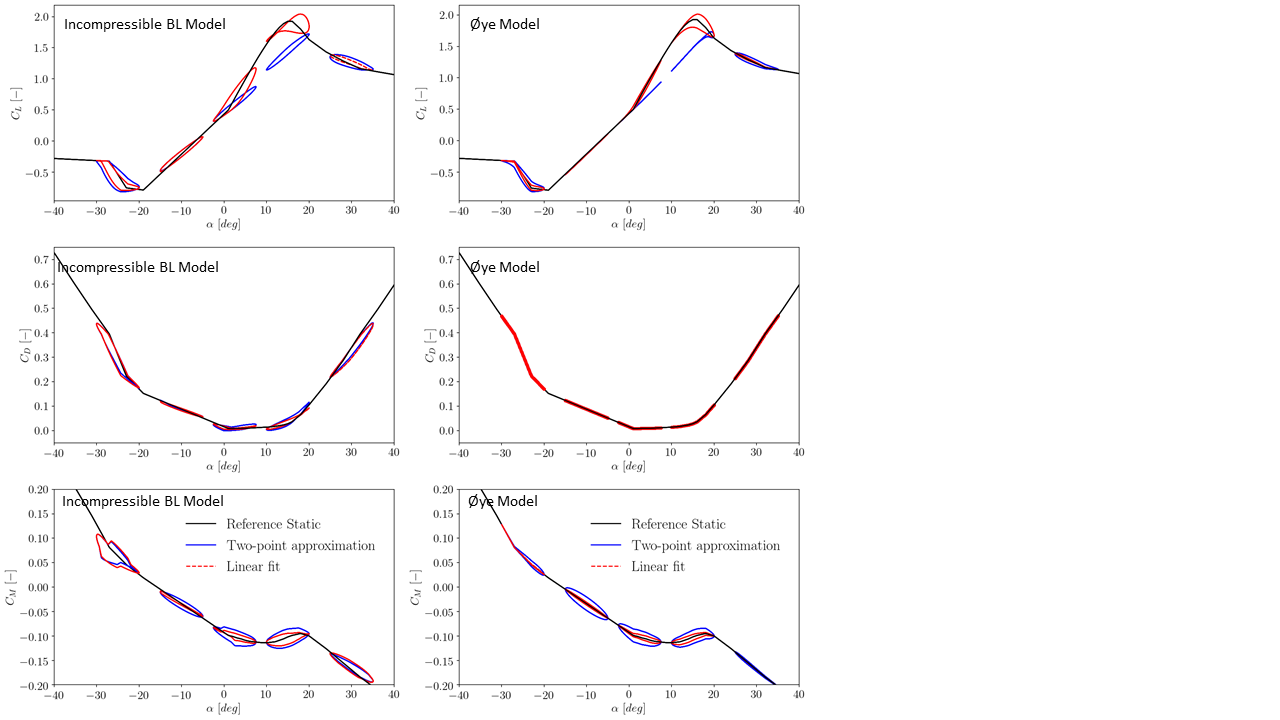Bladed versions affected: all Bladed versions supporting Linear Fit Gradient method.
Date of last article update: 24 November 2022
From Bladed 4.13, a new method called the “linear fit gradient method” has been developed and implemented. This method takes into account several polar points to evaluate the real polar gradient by applying a linear fit over the linear polar regime, see Figure below. The gradient of the linear fit approach is calculated by applying the least sqrare approach. The main challenge of applying the linear fit is to employ the method only within the linear regime of the polar. This linear regime is searched automatically from the zero lift angle of attack up to +7 deg. If no reasonable gradient is found within this range, then the gradient is simply set to 2π according to the inviscid gradient from the thin airfoil theory. By using the linear fit approach, the calculated gradient becomes less sensitive to a local change in the gradient value. Using this approach is extremely important when the polar gradient changes between the zero-lift angle of attack and zero angle of attack. By doing so, the dynamic stall calculations will be more accurate in most conditions. This approach is now set as the new default in determining the polar gradient. It is recommended to use this option in Bladed calculations. Illustration about the concept of the linear fit gradient method and examples of its impact for two dynamic stall models in Bladed are presented in Figure below. It can be seen that reasonable results are obtained when the linear fit gradient method is adopted in the computations. 
